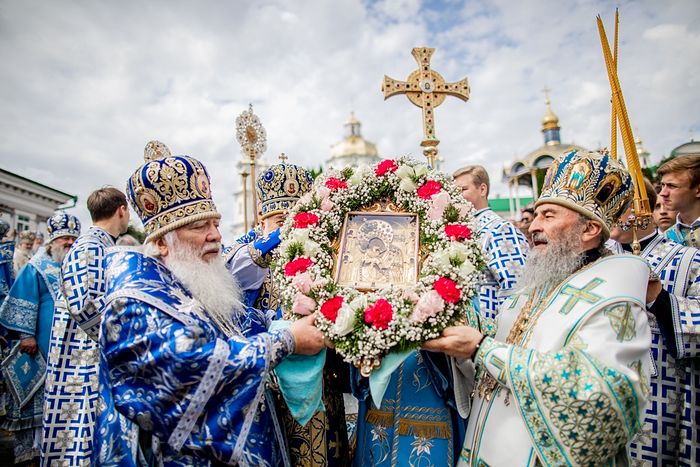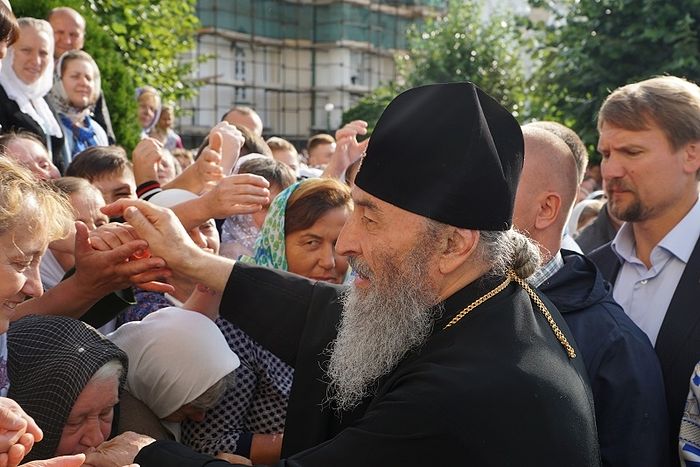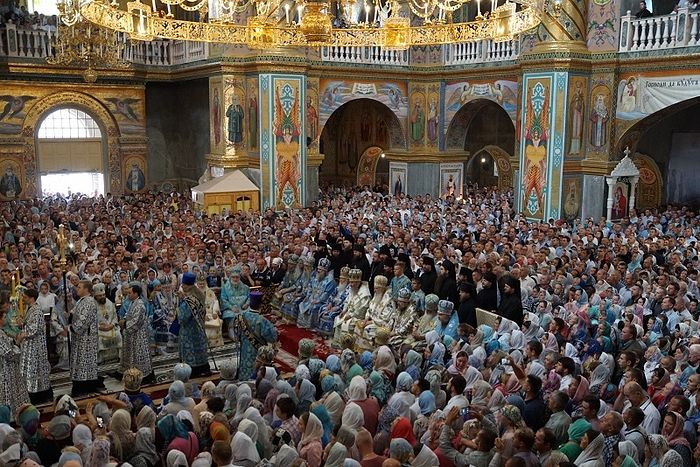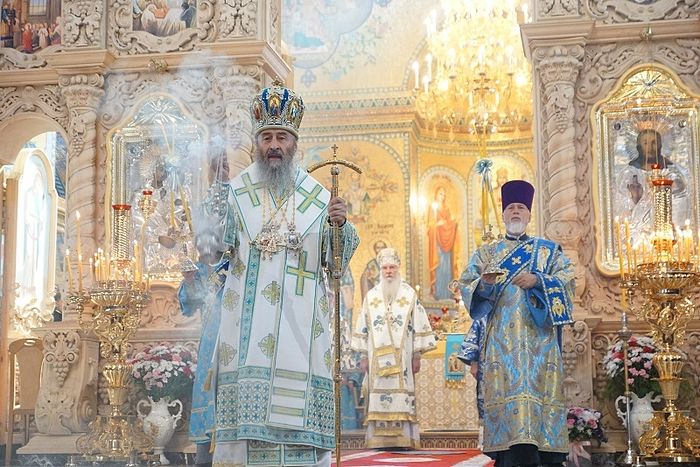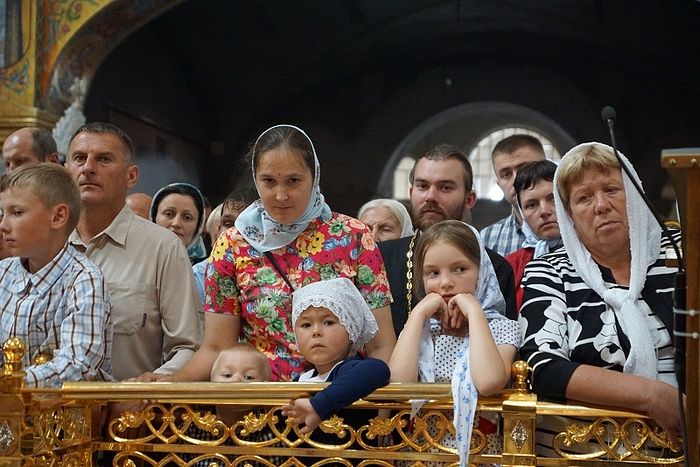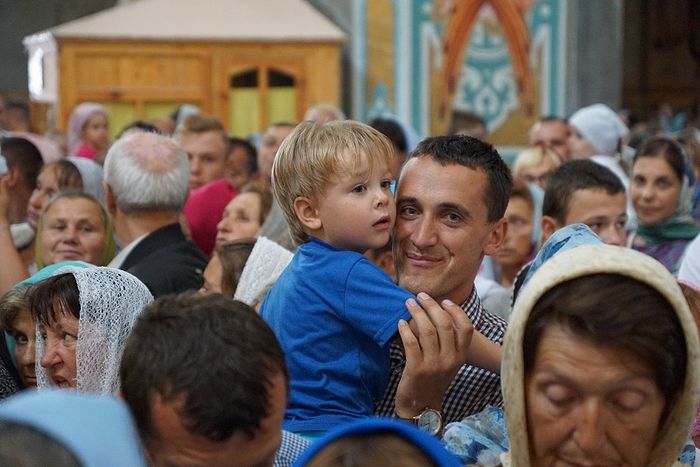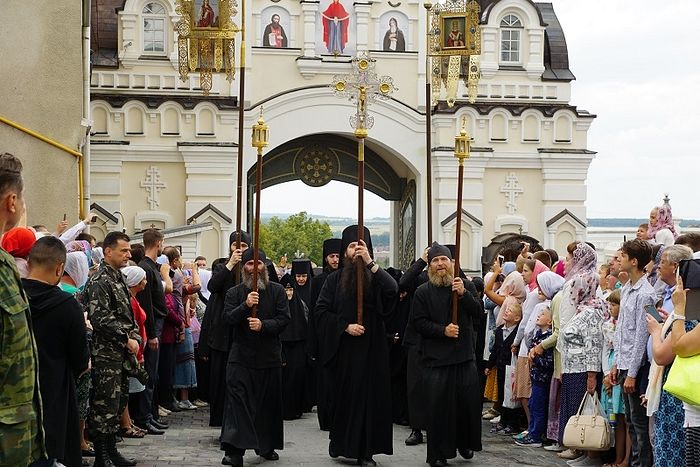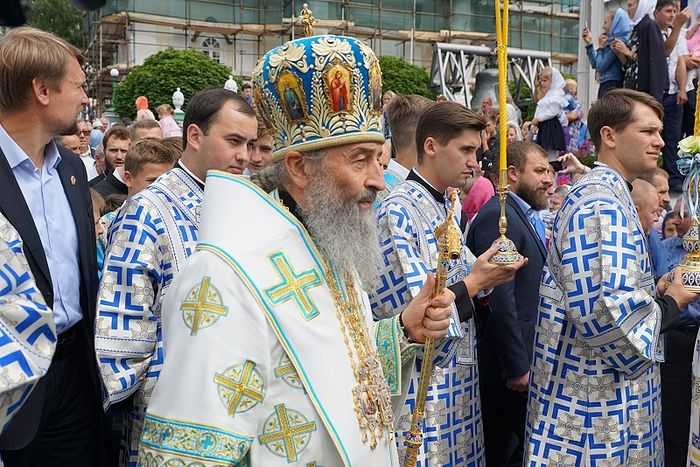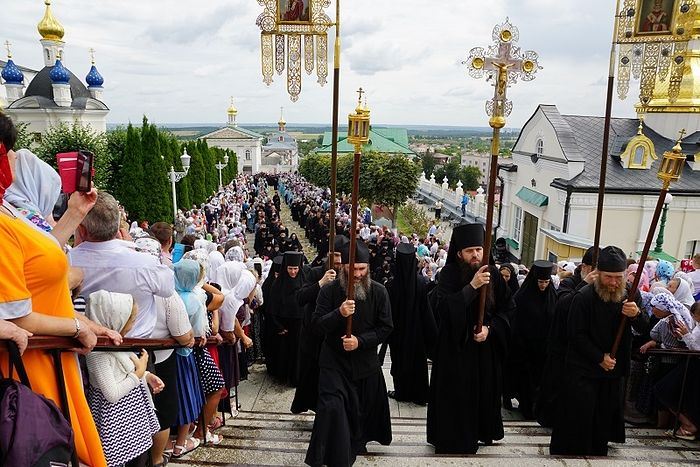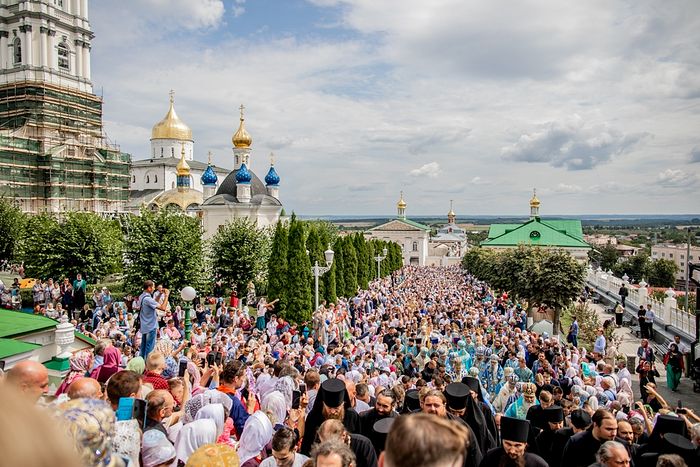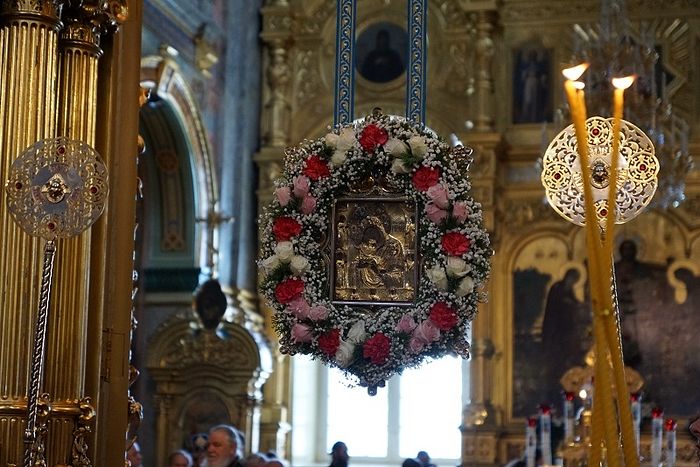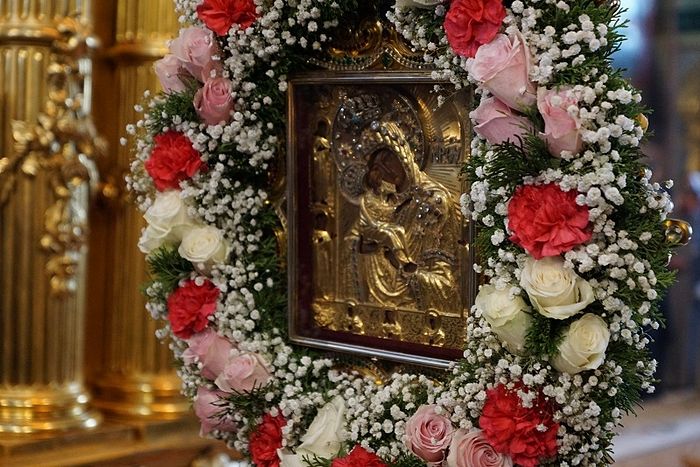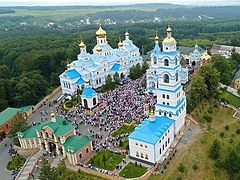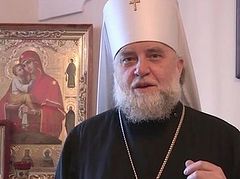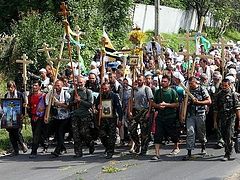Pochaev, August 6, 2019
Thousands gathered to celebrate one of the most beloved icons of the Mother of God yesterday.
His Beatitude Metropolitan Onuphry of Kiev and All Ukraine, the primate of the Ukrainian Orthodox Church, celebrated the Divine Liturgy for the feast of the Pochaev Icon of the Mother of God in the Transfiguration Cathedral of the Holy Dormition-Pochaev Lavra, concelebrated by 23 other hierarchs of the Ukrainian Church, including His Eminence Metropolitan Vladimir, the abbot of the Pochaev Lavra, reports the Information-Education Department of the Ukrainian Church.
Thousands of Orthodox faithful from throughout Ukraine and abroad came to the Lavra to experience the joy of the feast. A great many of them arrived as part of a 185-mile international cross procession that begins annually in Poland and passes through Belarus, and the lands of Volyn, Rivne, and Ternopil on the way to the Lavra. The faithful of the Ukrainian Church also arrived in separate processions from the Ivano-Frankivsk, Ternopil, Rivne, and Lutsk Dioceses to honor the Most Holy Theotokos.
After reading the Holy Gospel, Met. Onuphry, the greatly beloved and revered Ukrainian archpastor, addressed the flock with a primatial word, noting that the Mother of God “has given and gives many amazing miracles, helping us to bear our earthly cross, consisting of adversity and sicknesses.”
We must constantly turn in prayer to the Theotokos that our souls might remain the abode of God and not of the passions, Met. Onuphry told his flock.
A special prayer for peace in Ukraine and the unity of the Orthodox Church was read out during the service.
Following the Liturgy, Met. Onuphry led a cross procession with the Pochaev Icon to the Dormition Cathedral in the Lavra, where a festive moleben was served.
A traditional festive procession with the Pochaev Icon was also held a few days earlier, on August 2, from the nearby village of Savchitsa to the Lavra, held annually in memory of the events of 400 years ago, when the monastery was saved from the invasion of the Tatar Khan Nurredin in 1675 by prayers before the miraculous image.
***
Icon of the Mother of God of Pochaev
The Pochaev Icon of the Mother of God is among the most venerable sacred items of the Orthodox Church. Located at the Dormition Cathedral, Pochaev, Ukraine, the icon is renowned throughout the Slavic world and is venerated by Orthodox Christians throughout the world. Christians of other confessions also come to venerate the wonderworking image of the Most Holy Theotokos, together with the Orthodox. The wonderworking icon has been kept at the Pochaev Lavra, an ancient bastion of Orthodoxy, for about 400 years. (The account of the transfer of the icon to the Pochaev monastery is found under September 8). The miracles which issued forth from the holy icon are numerous and are testified to in the monastery books with the signatures of the faithful who have been delivered from unclean spirits, liberated from captivity, and sinners brought to their senses.
In the year 1721, Pochaev was occupied by Uniates. Even in this difficult time for the Lavra, the monastery chronicle notes 539 miracles from the glorified Orthodox icon. During the time of the Uniate rule in the second half of the eighteenth century, for example, the Uniate nobleman Count Nicholas Pototski became a benefactor of the Pochaev Lavra through the following miraculous circumstance. Having accused his coachman of overturning the carriage with frenzied horses, the count took out a pistol to shoot him. The coachman, turning towards Pochaev Hill, reached his hands upwards and cried out: “Mother of God, manifest in the Pochaev Icon, save me!” Pototski several times tried to shoot the pistol, which had never let him down, but the weapon misfired. The coachman remained alive. Pototski then immediately went to the wonderworking icon and decided to devote himself and all his property to the building-up of the monastery. From his wealth the Dormition cathedral was built, as well as buildings for the brethren.
The return of Pochaev into the bosom of Orthodoxy in 1832 was marked by the miraculous healing of the blind maiden Anna Akimchukova, who had come on pilgrimage to the holy things together with her seventy-year-old grandmother from Kremenets-Podolsk, 200 versts away. In memory of this event, the Volhynia archbishop and Lavra archimandrite Innocent (1832-1840) established the reading of the Akathist on Saturdays before the wonderworking icon. During the time of Archimandrite Agathangelus, Archbishop of Volhynia (1866-1876), a separate chapel was constructed in the galleries of the Holy Trinity church in memory of the victory over the Tatars, which was dedicated on July 23, 1875.
The Pochaev Icon is also commemorated on Friday of Bright Week and on September 8.
Commemoration of the Miraculous Appearance of the Mother of God at Pochaev, which saved the Monastery from the assault of the Tatars and Turks
The celebration in honor of the Pochaev Icon of the Mother of God on July 23 was established in memory of the deliverance of the Dormition Lavra monastery from a Turkish siege on July 20-23, 1675.
In the summer of 1675 during the Zbarazhsk War with the Turks, in the reign of the Polish King Jan Sobesski (1674-1696), regiments composed of Tatars under the command of Khan Nurredin via Vishnevets fell upon the Pochaev monastery, surrounding it on three sides. The weak monastery walls and its stone buildings did not offer much defense against a siege. The igumen Joseph Dobromirsky urged the brethren and laypeople to pray to their heavenly intercessors: the Most Holy Theotokos and St. Job of Pochaev (October 28).
The monks and the laypeople prayed fervently, prostrating themselves before the wonderworking icon of the Mother of God and the reliquary with the relics of St Job. At sunrise on the morning of July 23, as the Tatars were planning an assault on the monastery, the igumen ordered an Akathist to the Theotokos to be sung. At the opening words, “O Queen of the Heavenly Hosts,” the Most Holy Theotokos suddenly appeared over the church, in “an unfurled gleaming-white maphorion,” with angels holding unsheathed swords. St Job stood beside the Mother of God, bowing to Her and beseeching Her to defend the monastery.
The Tatars believed the heavenly army was a vision, and in confusion they began to shoot arrows at the Most Holy Theotokos and St Job, but the arrows fell backwards and wounded those who shot them. Terror seized the enemy. In a flight of panic and without looking, they trampled upon and killed each other. The defenders of the monastery attempted pursuit and took many prisoners. Some of the prisoners afterwards accepted the Christian Faith and remained at the monastery thereafter.

